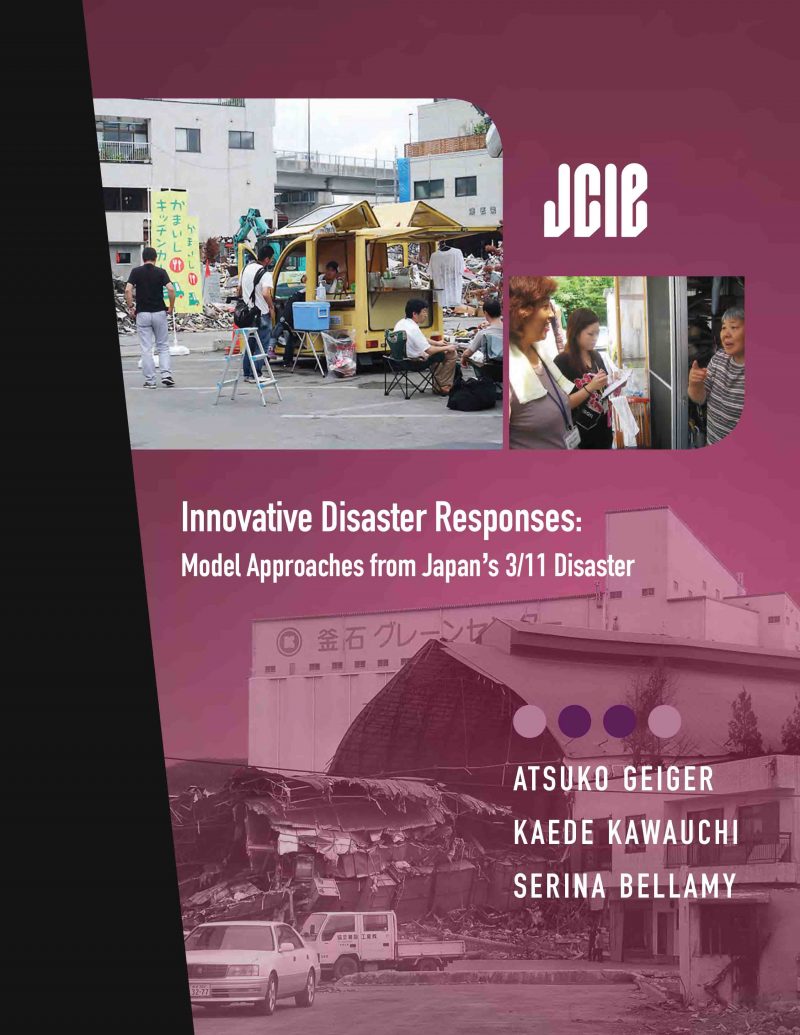In the aftermath of the tragedy of the Great East Japan Earthquake of March 2011, the world witnessed with admiration the resiliency of the Japanese people. Indeed, although full recovery may still be years or decades away in many regards, there is a great deal to be learned from the way in which the people of Tohoku responded to the disaster. In particular, Japanese civil society, which had not been a particularly strong force in Tohoku in the past, stepped up to play an active role in the recovery and reconstruction process. Not only did their efforts become an important supplement to the work of the national and local governments, but in many cases, these organizations have been impressive innovators, finding new and unique ways to address the various issues that have emerged in post-disaster communities.
This report analyzes four innovative projects that can be emulated after disasters in other countries around the world.
- Providing care for seniors—Mederu Car Grocery Delivery Project of Sankaku Planning Iwate
- Reviving the economy and employment in local communities—Kamaishi Kitchen Car Food Trucks, organized by the Fuji Social Welfare Foundation and Kamaishi Platform
- Facilitating funding for local nonprofits—Sanaburi Foundation, the first community foundation in Tohoku
- Addressing post-traumatic mental health—Tohoku Outreach Mission organized by the Japan Medical Society of America, the September 11th Families’ Association, Rotary Clubs, and the Arnhold Global Health Institute at Mount Sinai
It also briefly introduces several other model responses to 3/11.
Related Resources
Getting International Disaster Philanthropy Right: Lessons from Japan’s 2011 Tsunami (July 2016)
Strengthening US-Japan NGO Partnerships On Humanitarian Responses: Lessons from 3/11 (March 2015)
Bringing People Together: Assessing the Impact of 3/11 on US-Japan Grassroots Exchange (March 2015)
Slideshow: 10 Innovative Ideas from the 3/11 Response
Annual Survey: US Giving in Response to Japan Disaster Reaches $737 Million (March 2015)
By Atsuko Geiger, Kaede Kawauchi, and Serena Bellamy

